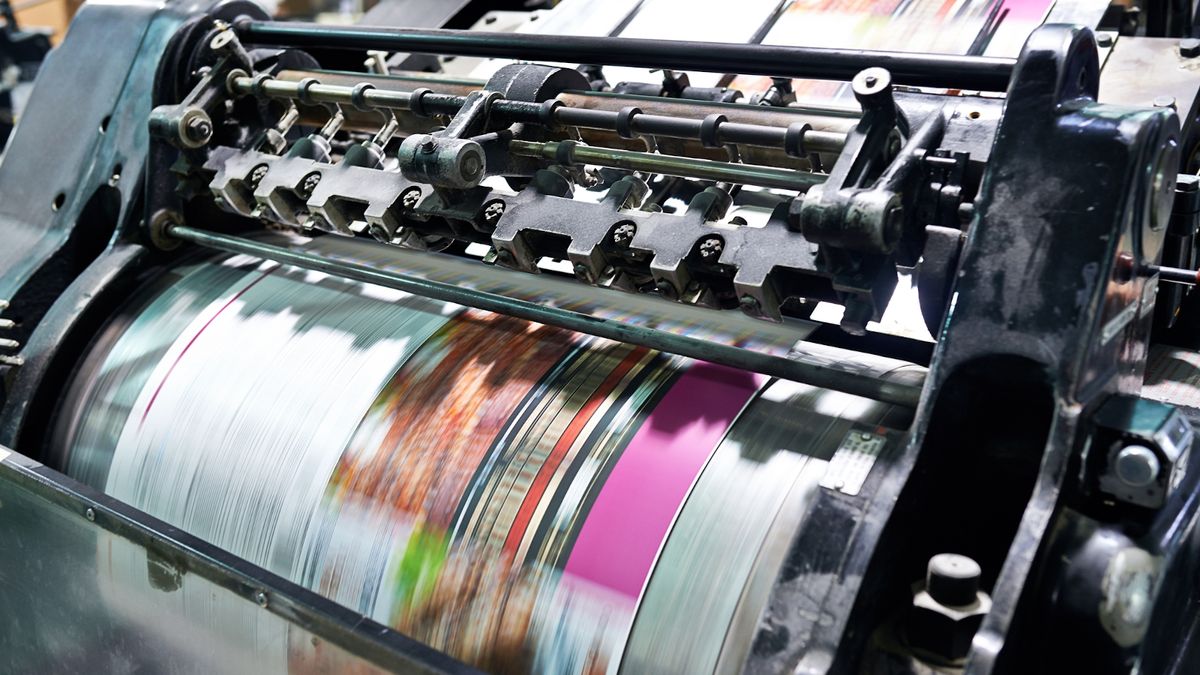In the world of publishing, offset printing for books remains a cornerstone technology. Despite the rise of digital printing, offset printing continues to be a preferred choice for many publishers due to its cost-effectiveness and superior quality for large print runs. This article delves into the intricacies of offset printing, exploring its benefits, the process, and why it remains a vital part of the book publishing industry.

What is Offset Printing?
Offset printing is a common printing technique where the inked image is transferred (or ‘offset’) from a plate to a rubber blanket, then to the printing surface. This method is used extensively in the production of books, newspapers, and other forms of print media. The primary advantage of offset printing is its ability to produce high-quality prints consistently and economically, especially for large runs.
How Does Offset Printing Work?
The offset printing process involves several steps, starting with creating a plate that holds the image of the content to be printed. This plate is mounted onto the press, and ink is applied. The image is then transferred onto a rubber blanket before being pressed onto the paper. The use of a rubber blanket allows for a clearer and sharper image, as it conforms to the texture of the printing surface.
Benefits of Offset Printing for Books
Offset printing offers numerous advantages, especially for book production. Here are some key benefits:
Cost-Effective for Large Print Runs
One of the most significant advantages of offset printing is its cost-effectiveness for large print runs. Once the initial setup is complete, the cost per book decreases significantly as the number of copies increases. This makes it an ideal choice for publishers looking to produce large quantities of a title.
Superior Print Quality
Offset printing provides superior print quality compared to digital alternatives. It offers consistent color and high resolution, making it perfect for detailed images and complex graphics. The use of the CMYK color model allows for precise color matching, which is crucial for maintaining the integrity of the book’s design.
Wide Range of Paper Options
With offset printing, publishers have a wider range of paper options to choose from. This flexibility allows for customized textures and finishes, enhancing the overall feel and appearance of the book. Whether glossy, matte, or textured, offset printing can accommodate various paper types to suit the needs of the project.
The Offset Printing Process: Step by Step
Understanding the offset printing process can help publishers and authors make informed decisions about their printing needs. Heres a step-by-step guide:
1. Prepress Preparation
The process begins with prepress preparation, where the book’s content is formatted and proofed. This stage involves creating digital files of the book, which are then used to make printing plates. Accuracy at this stage is crucial to ensure that the final product meets quality standards.
2. Plate Making
Once the digital files are ready, they are used to create printing plates. These plates are etched with the content to be printed and serve as the blueprint for the printing process. The quality of the plates directly impacts the quality of the print, making this a critical step in the process.
3. Printing
During the printing stage, the plates are mounted onto the press, and ink is applied. The inked plates transfer the image onto a rubber blanket, which then presses it onto the paper. This indirect transfer process is what gives offset printing its name.
4. Post-Printing
After printing, the sheets are allowed to dry before being cut, bound, and finished. This stage includes trimming the pages to size, binding them into books, and adding any additional finishes, such as lamination or embossing.
Offset Printing vs. Digital Printing
While both offset and digital printing have their advantages, they serve different purposes. Digital printing is ideal for short runs and quick turnaround times, but it cannot match the quality and cost-effectiveness of offset printing for larger print runs. For a detailed comparison, you can visit offset vs digital printing.
When to Choose Offset Printing?
Offset printing is best suited for projects that require high-quality prints and are produced in large quantities. It is perfect for novels, textbooks, and any publication where consistency and cost-efficiency are paramount.
Environmental Considerations
Although offset printing is highly efficient, it is important to consider its environmental impact. Many modern offset printing companies are adopting eco-friendly practices, such as using soy-based inks and recycling paper waste, to reduce their carbon footprint.
Challenges of Offset Printing
Despite its advantages, offset printing is not without its challenges. The initial setup can be costly, and any mistakes during the prepress stage can lead to significant delays and additional expenses. However, with careful planning and attention to detail, these challenges can be mitigated.
Conclusion
In conclusion, offset printing for books remains an indispensable tool in the publishing industry. Its ability to produce high-quality prints at an economical rate makes it a preferred choice for publishers worldwide. By understanding the process and its benefits, authors and publishers can make informed decisions that best suit their needs.

FAQs
What is the main advantage of offset printing?
The main advantage of offset printing is its cost-effectiveness for large print runs and its ability to produce high-quality, consistent prints.
How does offset printing differ from digital printing?
Offset printing uses plates and is more cost-effective for large quantities, while digital printing is better suited for short runs and quick turnarounds.
Is offset printing environmentally friendly?
Many offset printing companies are adopting eco-friendly practices, such as using soy-based inks and recycling paper waste, to reduce environmental impact.
This article contains affiliate links. We may earn a commission at no extra cost to you.







